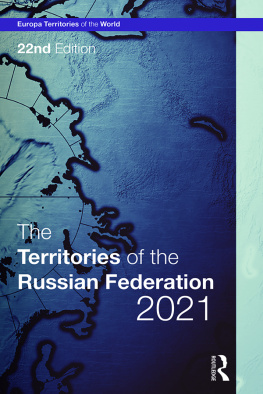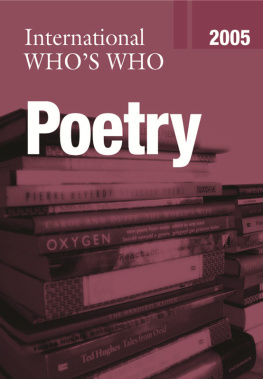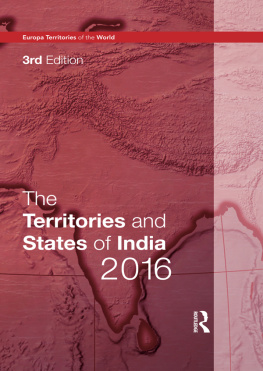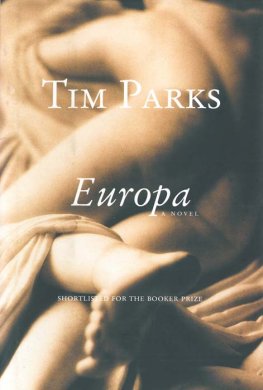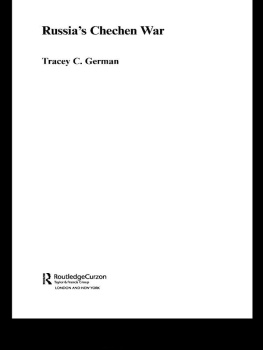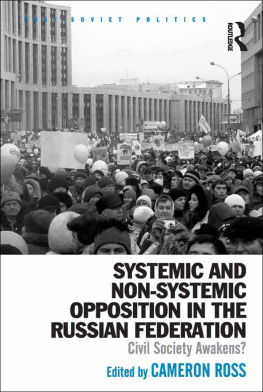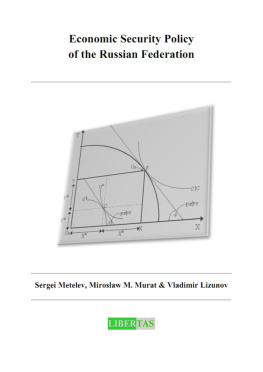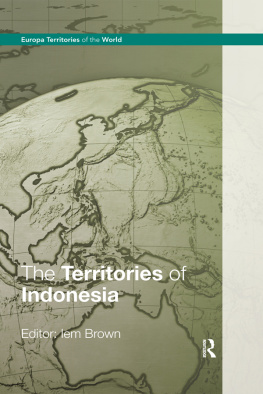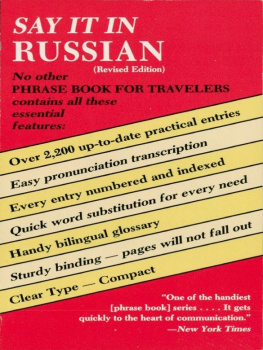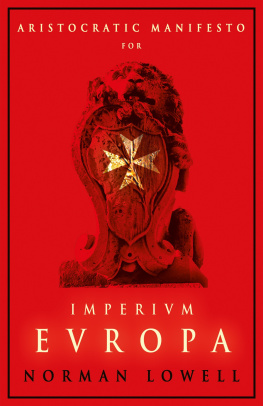The
Territories of the
Russian Federation
2021
22nd edition published 2021
by Routledge
2 Park Square, Milton Park, Abingdon, Oxon, OX14 4RN
and by Routledge
605 Third Ave, New York, NY 10017
Routledge is an imprint of the Taylor & Francis Group, an informa business
2021 Routledge
The right of the editor to be identified as the author of the editorial material, and of the authors for their individual chapters, has been asserted in accordance with sections 77 and 78 of the Copyright, Designs and Patents Act 1988.
All rights reserved. No part of this publication may be photocopied, recorded, or otherwise reproduced, stored in a retrieval system or transmitted in any form or by any electronic or mechanical means without the prior permission of the copyright owner.
Trademark notice: Product or corporate names may be trademarks, and are used only for identification and explanation without intention to infringe.
First published 1999
ISBN: 978-0-367-69928-4 (hbk)
ISBN: 978-1-003-14386-4 (ebk)
ISSN 1465-461X
Editor: Dominic Heaney
Senior Editor, Statistics: Philip McIntyre
Editorial Assistant: Lucy Pritchard
Statistics Researchers: Mohd Khalid Ansari (Team Manager),
Syed Zaki Mehdi (Senior Researcher), Akansha Gusain, Divya Rathor
Contributor: Catriona Marcham
Foreword
The 22nd edition of THE TERRITORIES OF THE RUSSIAN FEDERATION aims to furnish a clear and comprehensive introduction to Russias regions, without which an understanding of the worlds largest country must remain opaque.
This book is divided into four parts. Part One is an introduction, with an authoritative article covering federalregional relations in Russia since the return of Vladimir Putin to the presidency in 2012. There is also a chronology of Russian history and politics, together with fully revised economic and demographic statistics, and information on the federal administration, including the executive and legislative organs and the principal political parties. Part Two comprises the territorial surveys, the principal section of the book, with individual chapters on each of the 85 federal units (including those of the Crimean peninsula, internationally recognized as constituting Ukrainian territory). The geographical and historical background, the current political situation and an economic outline are accompanied by the names and contact details of the main officials in every territory. Each chapter includes a map of the federal unit, and there are, in addition, two maps covering wider geographical areas. A select bibliography appears in Part Three. Finally, Part Four provides an alphabetical listing of the territories, and an additional index groups them according to their geographical location within the Federal Okrugs into which Russia is divided. A gazetteer detailing the territories renamed or abolished since 1991 is provided. There is also an index of the principal cities of the Russian Federation, with details of the territories in which they are located.
Much of the content of THE TERRITORIES OF THE RUSSIAN FEDERATION is available online at www.europaworld.com. This prestigious resource incorporates sophisticated search and browse functions as well as specially commissioned visual and statistical content. An ongoing programme of updates of key areas of information ensures currency of content.
Since the 21th edition of this book was published, public and political life in Russia has been dominated, on the one hand, by the effects of the pandemic of the novel coronavirus disease (COVID-19), and on the other hand, by the introduction, following their effective endorsement in a consultative national plebiscite, of constitutional reforms that would, inter alia, permit the incumbent President, Vladimir Putin, to seek further terms in office after the expiry of his current mandate in 2024. Meanwhile, the continuing relative unpopularity of the dominant party, Yedinaya Rossiya (United Russia), was evident in the results of regional gubernatorial and legislative elections held in September 2020, although no one party was the principal beneficiary of the discontent with the Government. Meanwhile, the principal de facto opposition leader, Aleksei Navalnyi, was evacuated from Russia and hospitalized in Germany in September 2020, after he was poisoned with the nerve agent Novichok; upon his return to Russia in January 2021, he was immediately arrested and detained, and large-scale demonstrations in his support, and against the ruling authorities, ensued in many cities across the Federation.
January 2021
Acknowledgements
The editors gratefully acknowledge the co-operation, interest and advice of all who have contributed to this volume. We are indebted to many organizations within the Russian Federation, particularly the Federal Service of State Statistics, Rosstat. We are also grateful to Eugene Fleury, who originally prepared the maps included in this book.
PART ONE
Introduction
RASMUS NILSSON
Introduction
Many features of the federal structure within the Russian Federation originate in the Union of Soviet Socialist Republics (USSR). In principle, the Soviet system was highly centralized from its creation in 1922, with the Moscow-centred ruling party, the Kommunisticheskaya Partiya Sovetskogo Soyuza (KPSSCommunist Party of the Soviet Union), retaining practical and symbolic supremacy across the land. Never- theless, the communist leadership could not ignore regional affairs. In order to accommodate national aspirations the USSR from the outset allowed territorial units to exist within the Union Republics; such territorial units were often dedicated to specific ethnic groups in the multinational state. Furthermore, individual Soviet leaders depended on regional strongholds in order to secure power, or at least recognition, within Union-wide institutions. Thus, Leonid Brezhnev attained high office, including 18 years (196482) as General Secretary of the KPSS, not least due to his professional origins in the eastern parts of the Ukrainian Soviet Socialist Republic. Moreover, regional elites could build power bases with autonomous features. Such power could be built on charismatic authority, or on the importance that a given region held for the Union as a whole, such as the West Siberian regions containing significant hydro- carbon reserves.
Following the disintegration of the USSR in 1991, the President of the Russian Federation, Boris Yeltsin, held a significant public profile, and was personally linked to rapid political and economic transformations that enveloped Russia during the 1990s. Meanwhile, although Yeltsin sought to retain a substantial role for Russia and for himself on the world stage, he could not ignore the plight of Russias regions, most of which regularly appealed to his Government for economic support in the face of a crumbling economy and decaying infrastructure. Yet the Yeltsin administration often lacked the capability to assist, and was also forced to enter into specific agreements with those regions from which his Government could gain particular benefits, such as the energy-rich Republic of Tatarstan. Despite Yeltsins success in holding the Russian Federation together during its first troubled post-Soviet years, the resulting stateas formalized in the 1993 Constitutionwas an unwieldy amalgam of ill-defined prerogatives divided between central and regional authorities, which repeatedly led to prolonged regional dissatisfaction or simply non-compliance with federal demands.

